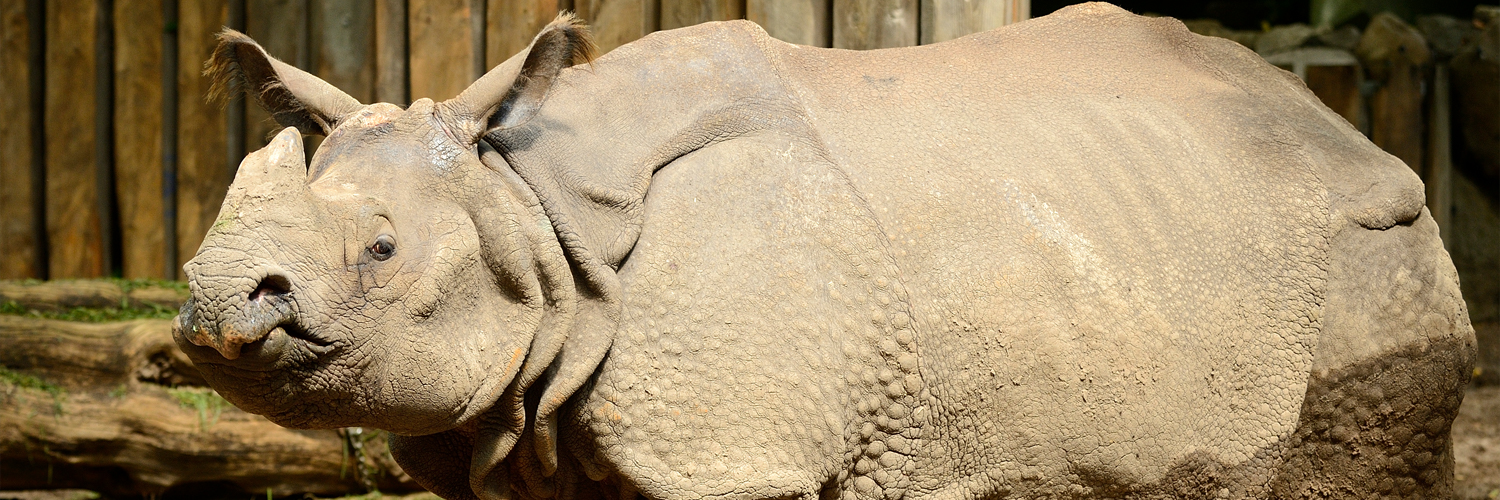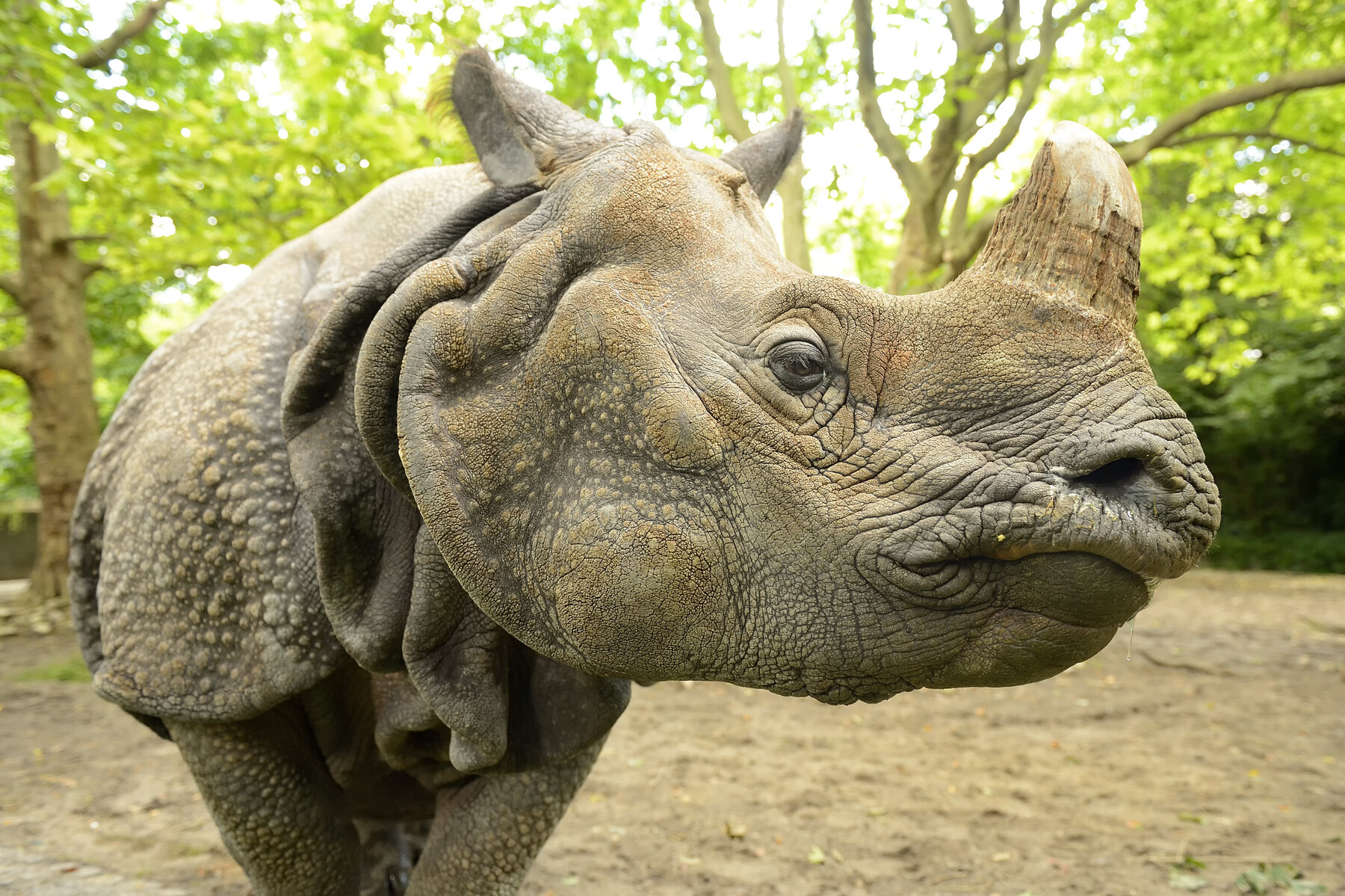
Greater one-horned Rhinoceros
Rhinoceros unicornis
Characteristics
- Origin
Asia, formerly throughout Indochina, today only in protected areas of India (West Bengal, Assam, Uttar Pradesh)
- Habitat
in the southern Nepal and Bhutan, prefers wetlands and grasslands
- Diet
Great one-horned rhinoceroses eat up to 150 kg grasses, aquatic plants, leaves and shoots a day.
- Status
approx. 2,750 in natural habitat
- Size
Shoulder height 1.75-2 m, length: 3-3.80 m
- Weight
Male: 1.8 to 2 t
Female: 1.6 to 1.8 t - Gestation period
15 months
- Achievable age
up to 40 years in the wild, up to 50 years in human care
Threat Categories of IUCN


Did you know?
Greater one-horned Rhinoceroses can gain up 2-3 tons in weight – a VW bus T5 weighs that much.
Their horn grows a lifelong and weighs about 3 kg.
That they see very poorly.
Rhinos have after elephants with 15 months the longest gestation period among land mammals.

